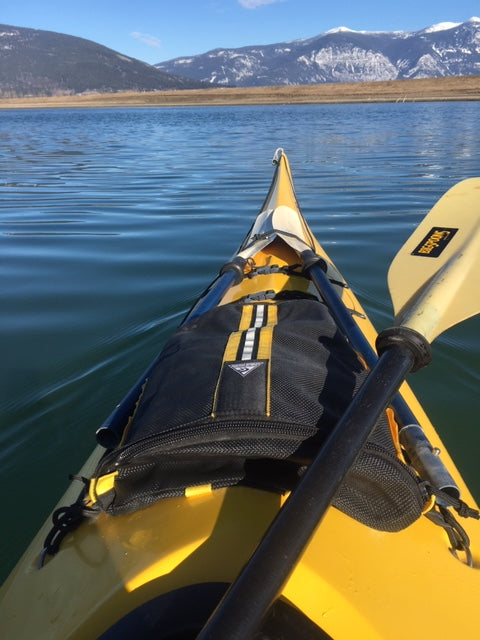
Lost Paddle - Don't Panic
Share
Up the Creek Without a Paddle… 530 words…two minute read…
The storm builds. Cresting seas caused by increasing winds crash over the kayak’s bow… A deck lashing comes loose requiring both hands to secure it. Balancing the paddle across the deck, a wind gust catches the paddle blade and in the blink of an eye it is gone.
Losing a paddle is a huge problem. It’s rarely going to happen at a good time. Sometimes with only seconds to react before capsizing. Considering the potential for catastrophe, it’s important to plan and practice lost paddle drills.
In a perfect world, it is best not to lose your paddle in the first place. Kayaking photographers have to use both hands to operate their camera. With the paddle resting across their deck, they are often at risk of losing their paddle. Many use a paddle tether. A tether is a cord that attaches to the center part of the paddle shaft and to either a hard point on the kayak or to the paddler’s PFD. If the paddle is washed or blown overboard, the photographer can quickly recover their paddle. The downside is that to be effective the tether has to always be attached to be available when required.

The other option is to have a spare paddle available. Usually bungee’d onto the fore deck for instant access, the kayaker will seldom have time to pull out both halves of the paddle and connect them together before use. More likely, a single paddle is pulled out and used to orient the boat to the wind and waves. Once on an even keel, the other paddle half is withdrawn from the deck bungee and connected.

For those with limited space on deck, a single-blade collapsible paddle can be instantly accessed and used even with the paddle shaft telescoped in… until it is safe to twist the shaft lock and extend the paddle to it’s full length. In a perfect world this recovery could happen quick enough to be able to manoeuvre the kayak over to the lost paddle and retrieve it. If not, the single bladed emergency paddle could be used to get to safety but is not suited for continued paddling such as on a multi-day expedition.

For a quick afternoon solo paddle, having a collapsible spare paddle will be enough. For longer or multi-day trips, it’s important to have a spare, full-size, double bladed kayak paddle with you in case of breaking or losing your primary paddle.

Redundancy is also a good idea on long trips. One combination is utilizing a tether on your primary paddle while having a spare bungee’d on deck. On a recent expedition to the Yukon River headwaters, my photographer paddle partner used a tether and had a collapsible paddle accessible. I had a collapsible paddle as well. We also had one spare double bladed kayak paddle between us that we took turns carrying – in case one of us damaged our primary paddle.
The bottom line is to evaluate the risk of what you are planning on doing and equip yourself accordingly. Consider distances, location, the number of people involved and how long you will be paddling. Then practice different combinations and configurations until you know that you can self rescue from a lost paddle incident.